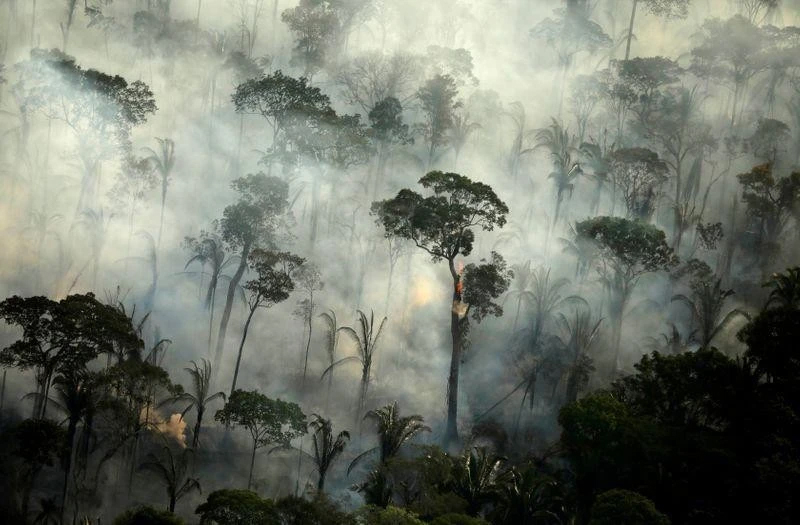Protecting Amazon rainforest
Along with rising forest fires, increasingly severe drought is the cause of a slowdown in the recovery of the Amazon rainforest. The research results by scientists sound the warning bell about the need to speed up the protection of the Amazon forest, which is considered the “lungs” of the Earth.
 |
| Fires in an area of the Amazon forest in 2019. (Photo: REUTERS) |
The study, just published in the Proceedings of the National Academy of Sciences (PNAS) journal, analysed satellite images of the vegetation activity of the Amazon rainforest. Tens of thousands of pixels, each covering an area of 25 km2, were meticulously analysed month by month and correlated with local rainfall data. The goal of the study is to determine the impact of the frequency, intensity or duration of droughts on Amazonian vegetation.
Results showed that 37% of mature vegetation in the region exhibited a slowing-down trend. The researchers concluded that the heavily deforested and degraded southeastern Amazon was most vulnerable to a “tipping event”, meaning a calamitous decline of the tropical rainforest to a different, drier state. Scientists warn that the signs of weakening resilience will push the world’s greatest tropical forest and biggest terrestrial carbon sink to a point of no return.
It is alarming that in less than 20 years, the Amazon forest has suffered four supposedly “one-in-a-century” severe droughts. Human-caused climate change severely impacts trees and other plants. In the past, the canopy of the South American rainforest, an area roughly half of Europe, had the ability to shrink and expand in tandem with the annual dry and rainy seasons and to bounce back from a single drought. However, the pace of recovery has recently become sluggish due to increasingly intense droughts in the southeast of the Amazon and more frequent in the northwest.
According to the study’s lead author, Johanna Van Passel, satellite images only show part of the true picture and the situation below the canopy could be even more serious. The author emphasises that trees are the last part of the ecosystem to show tipping points because they have the longest life cycle and are most able to cope.
According to experts, if humans are seeing a “tipping point” getting closer at this macro forest level, then it must be getting worse at a micro level – dire news and very worrying for Amazon. Tropical forests are home to 15,000 tree species, which play an important role in draw down CO2 from the atmosphere. However, this ability – and the overall resilience of forests – is being undermined by climate chaos caused by human burning of trees, gas, oil and coal. Research shows that the slowing rate of forest recovery is a sign of large-scale ecosystem collapse.
Not only drought, the Amazon has also suffered forest fires at a record high in the past 25 years. The National Institute for Space Research (INPE) of Brazil said that in the first four months of this year, the Amazon forest area in Brazil saw more than 12,000 km2 of forest land burned, the highest level since the data was collected in 1999.
The forest fire area is equivalent to the US state of Connecticut and larger than the area of Qatar. Forest fires in the Amazon often do not occur naturally but are mainly caused by arson and human reclamation to clear land for agriculture production. Brazil’s Ministry of Environment said that the administration of current President Lula da Silva has spent 405 million reals (79.4 million USD) on firefighting activities at the state level. In 2023, the Brazilian Government prevented half of the Amazon deforestation, but forest fires were still at an alarming level.
Expert Van Passel expressed concern about the future of the Amazon forest. She called on international policymakers to protect the world’s largest tropical forest, indigenous peoples and other traditional communities, as well as reducing greenhouse gas emissions to protect the Earth’s lungs.
NDO





READER COMMENTS